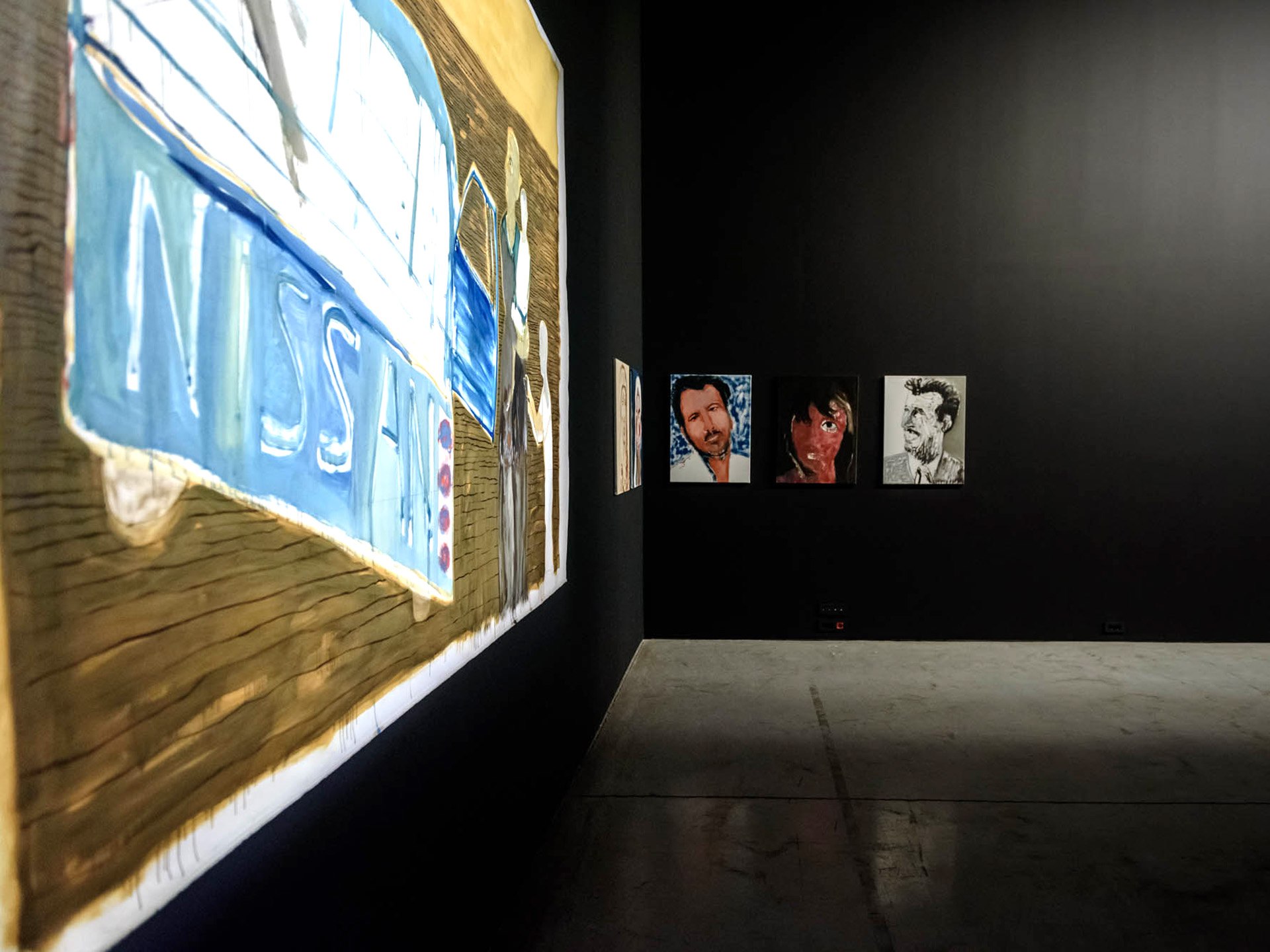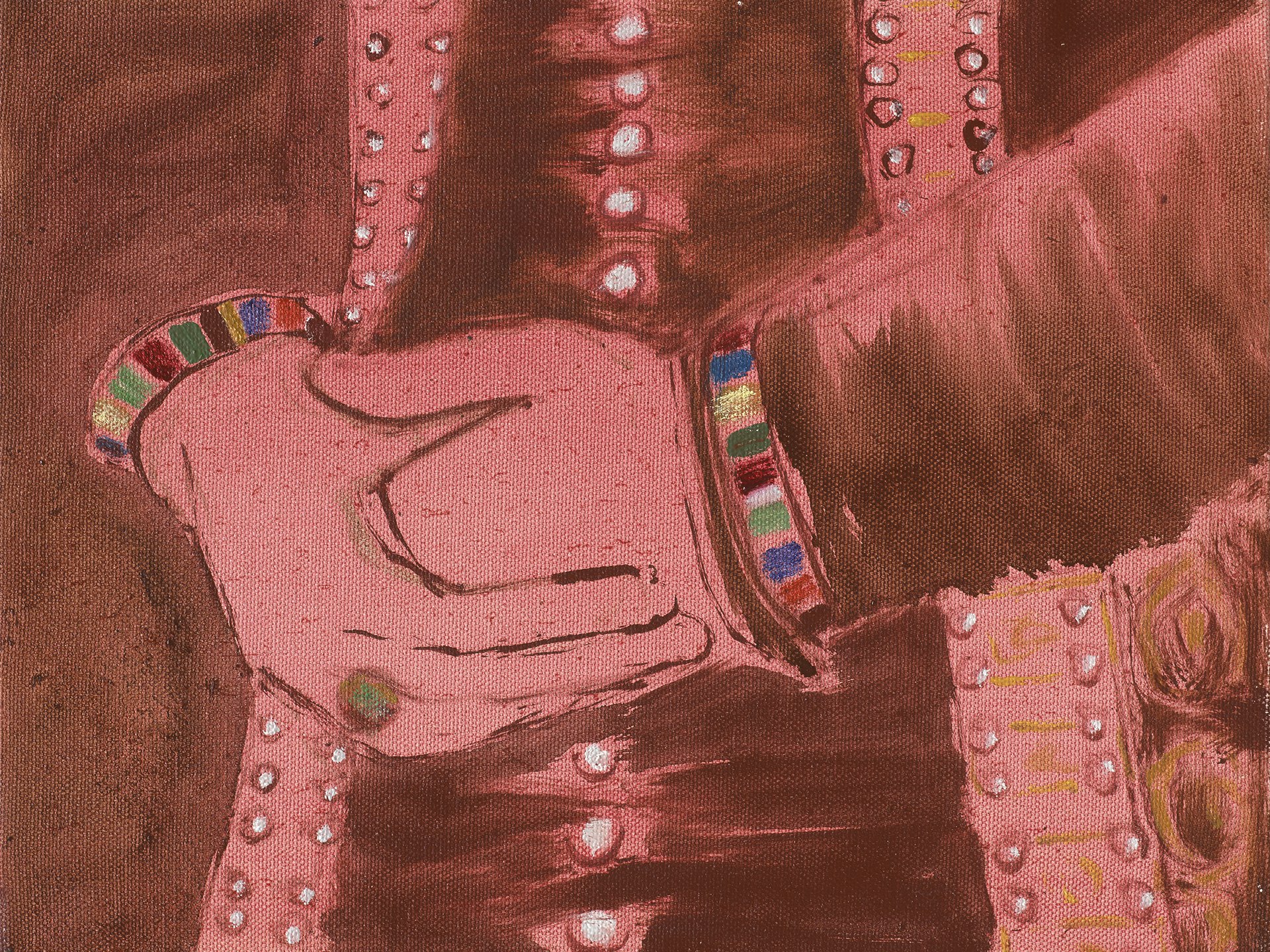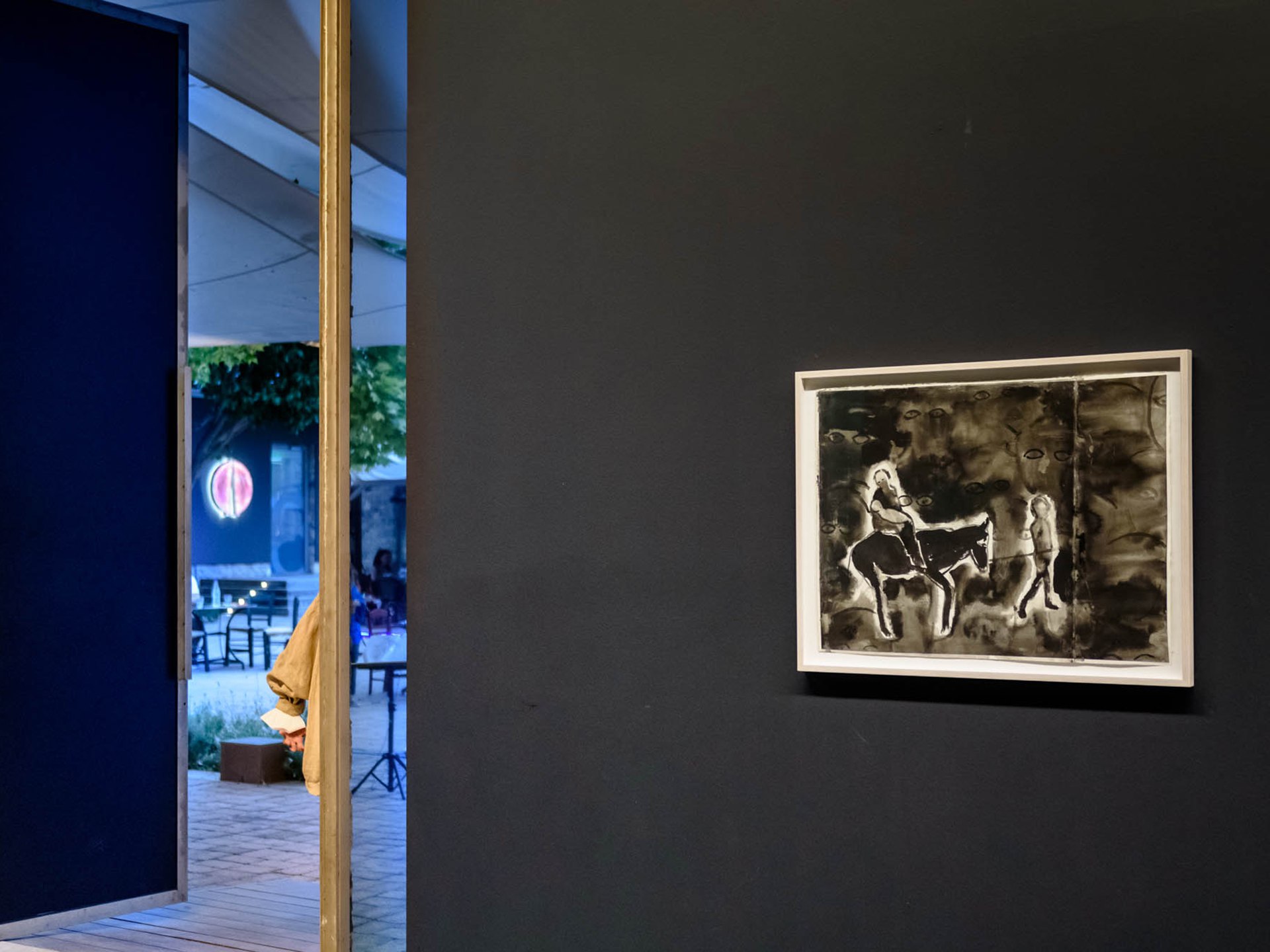



Lefteris Olympios
On Saturday June 11, 2022 FOUGARO welcomes to FOUGARO GALLERY the artist Lefteris Olympios, who lives and works in the Netherlands, Cyprus and Greece, on the occasion of a retrospective of his painting.
In this extensive exhibition under the title "3", visitors will get to know the work of a major, awarded artist who has assimilated the principles of folk and Byzantine art, creating paintings of a gestural character with a Greek universality. The exhibition is structured around three series of works, most of which are shown in Greece for the first time.
"The Journey" series of 2011 examines the archetypal notions of involuntary wandering and voluntary travel in their different versions. As noted by art historian Efthymia Georgiadou-Kountoura, "in the successive images of the narrative of the "journey" one can discern the persistent effort of Olympios to cover as many aspects of the story as possible and update the original motif. This struggle with matter, the struggle to approach the concept he had in mind, does not end at a single image but goes through constant shifts of perspective, until the painter is gradually led to complete freedom […]".
The series "Catherine Cornaro, the Third Hand" of 2018 illustrates the sad story of the last queen of Cyprus. In the artist's own words, "The woeful story of Catherine Cornaro, the last queen of Cyprus, at once fascinated and saddened me. […] This young noblewoman was sent over from Venice to marry the king of Cyprus, […] yet her end was not an auspicious one. After a reign of fifteen years, Catherine is coerced to cede power to the Serenissima. […]
Against her will, with her heart full of pain, she abandons Cyprus in March 1489, a childless widow driven out by her own native country. But who had really handed Cyprus over to Venice? History tells us it was Catherine Cornaro who did it. Yet she loved the place, loved the people and the people loved her. She did not want to leave. So, she becomes emotionally detached, and it's her physical body which becomes the instrument that cedes the reign; it becomes the third hand, that performs the act. It is the historic moment when the crown is handed over to the Lion of Venice."
Finally, “The Cyprus Drawings” of 2021-2022 were made in Cyprus during the lockdown periods recently imposed due to the COVID 19 pandemic. Instead of following any clear plan, the artist painted subjects from daily life, contemporary reality, Greek mythology, tradition, religion or the world of dreams and fantasy. As he says. "I would sit at the table with the papers and my materials and let my hand and my heart lead me where they wished. At first, I didn't believe it was I who made these drawings. That's why I'd say, as per the standard phrase on religious icons, 'made by the hand of Lefteris Olympios'."
Part of the proceeds from the sale of the exhibited works will be presented to "Together for Children" Association, towards creating facilities for housing children refugees from Ukraine together with their mothers or carers.
Lefteris Olympios
Born in Limassol in 1953, he lives and works in Amsterdam. He studied graphic design at the Doxiades School and painting, fresco, religious painting and mosaic at the Athens School of Fine Arts. He continued with studies in painting and sculpture at the Free Academy of the Arts in the Hague. His acquaintance with the artistic community of IJmuiden, a village outside Amsterdam, and especially with the painter Lei Moulin in 1985, was decisive in his career. In 1997 he represented Cyprus in the 47th Biennale of Venice with his ‘Philoxenia’ cycle of works. In 2012 the Byzantine & Christian Museum of Athens hosted his retrospective ‘Facing Byzantium’. In 2014 he presented at the Utrecht Cathedral the series ‘Violated Beauty’, a site-specific project on cultural heritage and specifically that of occupied Cyprus; in 2019, three of these works were permanently installed in the International Court of Justice in the Hague. He exhibits regularly in Cyprus, Greece and the Netherlands, while his works can be found in major private and public collections.
